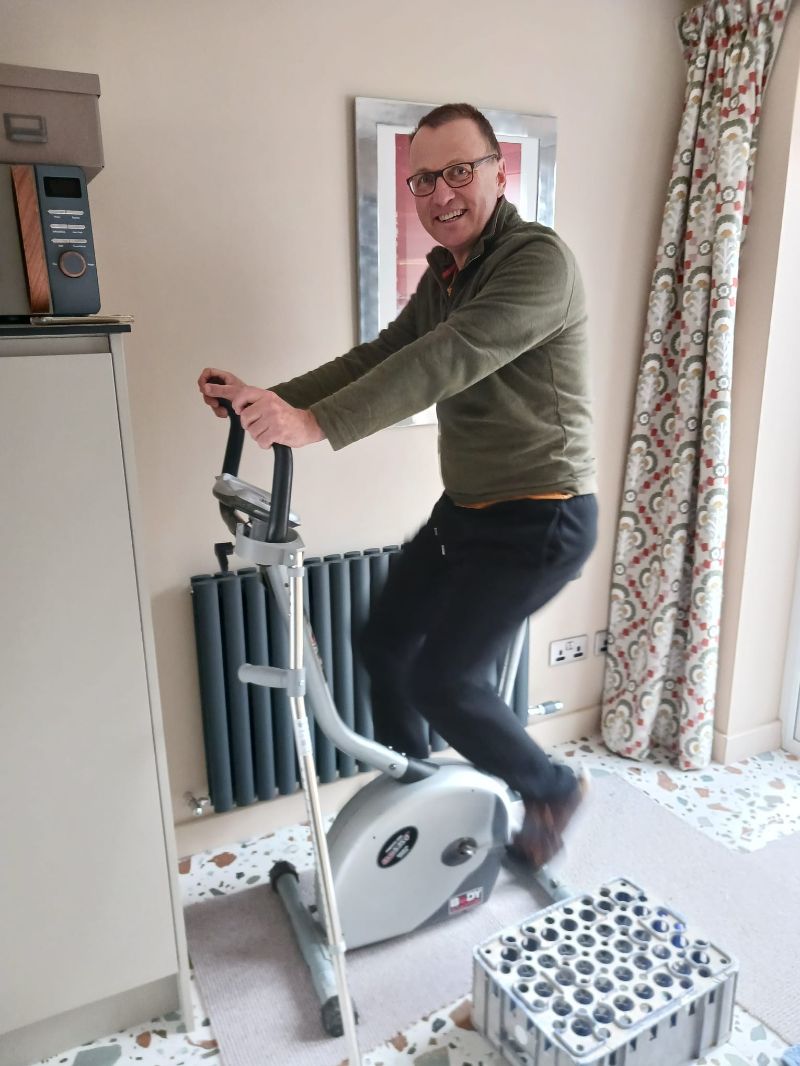Simon from Yorkshire had a problem with his hip which was limiting his mobility. He explained that: “any twisting motion of my hip caused me great pain”. After thorough examination and diagnostic testing, his doctor told him he had osteoarthritis, a degenerative joint disease. Simon wanted to return to his active lifestyle, so decided to look to the private healthcare system to get surgery done quickly and relieve his symptoms. Here we share his story.
Choosing a consultant surgeon for hip surgery
Simon understood that you have a lot of choice in the private sector and researched his options for his hip replacement surgery thoroughly. During this research, he found videos on Nuffield Health’s Leeds Hospital YouTube channel featuring Consultant Orthopaedic Surgeon, Mr James Hahnel.
Our research, published in Patient perspectives emphasised the importance patients place on consultants who care, and Simon was struck by Mr Hahnel's warm and approachable demeanour, as well as being impressed with his excellent surgical success rates and patient satisfaction statistics. This type of information is included in the consultant profiles on PHIN’s website.
Simon was keen for his consultant to have both remarkable technical skills and a genuine interest in patient well-being, and felt that Mr Hahnel met these criteria and chose him to conduct the hip replacement surgery.
Consultant excellence assisted by robotic precision
Mr Hahnel uses groundbreaking Mako Robotic-Assisted Arm technology to assist his hip replacement surgeries at Nuffield Health Leeds Hospital. One of the most significant benefits of this approach is the precision it offers. By combining Mr Hahnel’s expertise with robotic assistance an unparalleled level of accuracy in implant placement can be achieved. Our data on robotic-assisted surgery shows that this can lead to benefits for the patient including a reduced length of stay in hospital.
Preparing for robotic-assisted hip surgery
In the run up to his surgery, Simon engaged in ‘prehabilitation’ exercises given to him by his healthcare team. These were designed to strengthen the muscles surrounding the hip and maintain his overall physical fitness.
This isn’t an easy process, but Simon persevered and despite the pain, remained active, by taking part in Pilates, and going dog walking and cycling. Maintaining or improving physical fitness levels prior to surgery is important as it allows the body the opportunity for a quicker and easier recovery.
The surgery
Following a personalised pre-operative plan created using advanced imaging technology, the hip replacement went as planned, and the implant fit Simon's anatomy perfectly. This optimises long-term functionality and reduces the risk of complications.
After surgery
Post-surgery, Mr Hahnel’s approach is to educate his patients about their body and its limitations. By doing this he empowers them to recognise when it’s necessary to stop or moderate their activities. He says: “the idea is that the patient can resume normal life quicker and listen to their body. We found that if patients follow this pathway their functional outcome score is better than those who follow precautionary pathways.”
Recovering from a hip operation
Simon’s journey to recovery began with a few cautious steps after surgery. Helped by his team of dedicated physiotherapists, he then committed to a set of exercises designed to help him regain strength and mobility.
After a while, Simon decided to move onto an exercise bike to ease his hip into the motions of cycling. “I did a minute or two a day on the exercise bike and would build that up day on day, very slowly. Then I was able to increase the resistance on the device so I could push a bit harder” he explained. Within a month of his operation Simon was able to cycle 20 miles.
A pain-free hip
After just six months, Simon's new hip had restored his hip joint's functionality and he could move and exercise without pain. He can now once again cycle his beloved neighbourhood trails and go trekking through beautiful country sides with his wife.
The fact that Simon has been able to move from a life constrained by hip pain, to the active lifestyle he used to have, is a testament to the remarkable synergy between skilled surgeons like Mr James Hahnel and groundbreaking technologies like the Mako Robotic-Assisted Arm. Harnessing the precision and customisation of technology and with surgical expertise in this way, means patients like Simon can once again embrace life with joy and enthusiasm.
Disclaimer
We are very grateful to Simon and Nuffield Health – one of the UK’s major private healthcare provider – for giving us permission to share this story so that other patients better understand what it can be like to be a private patient.
PHIN only provides information, we do not recommend individual hospitals, consultants or funding methods, and recommend you make sure you look into all your options before making your healthcare decisions.
Some patients will base their choice on the price (if they are self-pay) of the procedure, others will follow the recommendations of their private medical insurer. Other patients will focus on the consultant’s experience or the potential for a new technology or a new technique to be used.
